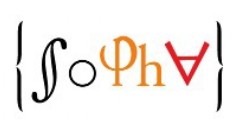A metasemantic theory tells us why a concept represents a particular content, e.g., why my concept ORANGUTAN has the property as its content. The key issue is explaining why the correct content is to be preferred to similar candidates. For example, if I acquire my concept ORANGUTAN by seeing a Sumatran orangutan, why does my concept not represent the narrower property ? This is the Filtering Problem.
In attempting to solve the Filtering Problem, many theorists have invoked causal-explanatory relations between a concept and its content. However, they rarely draw on general insights from the literature on causation and causal explanation. Here I treat the Filtering Problem as an instance of a broader problem, the problem of identifying the best causal explanation of some explanandum. Philosophers of causation and scientific explanation have made progress in solving this problem - thus, we can leverage their insights to filter down contents.
My working hypothesis is that a concept like ORANGUTAN represents the property that best explains why the cognizer formed that concept. Given this explanandum, I use three explanatory virtues to metasemantically filter: the virtues of proportionality, homogeneity, and distal balance. One example: consider the extinction of the non-avian dinosaurs by an asteroid impact. While we know this was a C-type asteroid rather than an S-type asteroid, an explanation of the extinction that cites the asteroid being a C-type is inferior to one that leaves out this information, because the spectral type of the asteroid was irrelevant to determining the dinos' demise. This example illustrates the much discussed virtue of proportionality, and explains why my concept represents rather than . I go on to show how many problematic contents can be filtered by invoking the three virtues together with our target explanandum of concept formation.

 PDF version
PDF version
